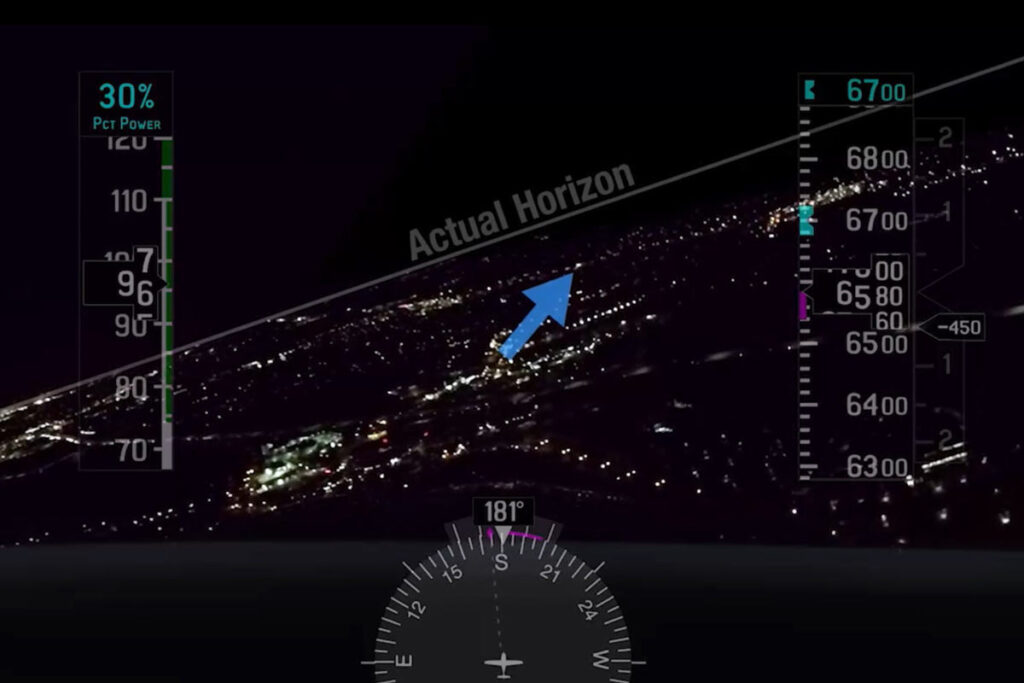Flying at night opens up a whole new world of beauty — glittering cities, moonlit clouds, and the quiet hum of the cockpit. But it also hides a less glamorous truth: your senses can’t always be trusted. Night illusions are visual and sensory misinterpretations that can mislead a pilot, sometimes with dangerous consequences. Understanding them is key to safe flying.
1. The Black-Hole Approach
What happens:
When approaching a runway at night with little to no surrounding lights (like over water or unlit terrain), pilots may feel they are too high on approach. This can cause an unintentional descent below the glide path.
Why it happens:
With no visual cues between the runway and the aircraft, the brain misjudges distance and height.
How to counter it:
Rely on the Precision Approach Path Indicator (PAPI) or Instrument Landing System (ILS) instead of visual judgment alone.
2. Autokinesis
What happens:
A stationary light in the distance appears to move after you stare at it for a few seconds.
Why it happens:
Your eyes make tiny, involuntary movements in the dark. With no frame of reference, your brain mistakes this for movement of the light.
How to counter it:
Avoid fixating on a single light — keep your eyes moving and scan the environment.
3. False Horizons
What happens:
City lights, cloud tops, or even sloping terrain can create an illusion of a tilted horizon, tricking you into banking the aircraft unnecessarily.
Why it happens:
At night, the natural horizon can be difficult or impossible to see, so your brain substitutes other patterns as a reference.
How to counter it:
Trust your attitude indicator — not your senses — when establishing level flight.

4. Somatogravic Illusion
What happens:
During rapid acceleration (like takeoff), you may feel as if the nose is pitching up too steeply, prompting a push forward on the controls.
Why it happens:
Your inner ear senses the acceleration as a backward tilt in the absence of visual references.
How to counter it:
Stay focused on your flight instruments during takeoff, especially at night and in IMC.
5. Size-Distance Illusion
What happens:
Bright or unusually large lights (like on a big runway) can appear closer than they actually are, while dim or small lights can seem farther away.
Why it happens:
At night, the brain uses brightness and size as depth cues.
How to counter it:
Use charts and approach profiles to verify distance and altitude instead of relying on perceived size.
6. Flicker Vertigo
What happens:
Flashing or flickering lights (like a rotating beacon or strobe reflecting inside the cockpit) can cause disorientation, nausea, dizziness, or even mild seizures in susceptible individuals.
Why it’s dangerous at night:
The dark environment makes the strobing effect more pronounced, and the brain can misinterpret the flashing as movement or instability.
Countermeasure:
Adjust cockpit lighting to reduce reflections, shield your eyes from direct strobe light, and avoid prolonged exposure to flashing lights.
Why This Matters for Student Pilots
Night illusions can be subtle, but their impact can be severe — from unstable approaches to spatial disorientation. The key to prevention is knowing they exist, recognising them early, and trusting your instruments more than your instincts when visual cues are unreliable.
Your eyes and inner ear can play tricks on you at night, but your instruments never lie. Learn to recognise night illusions, practice flying by reference to instruments, and you’ll navigate the darkness with confidence.
Want more aviation insights like this? Subscribe to our blog or follow us on Instagram @eazypilotindia for weekly content on flight training, career tips, and aviation news.